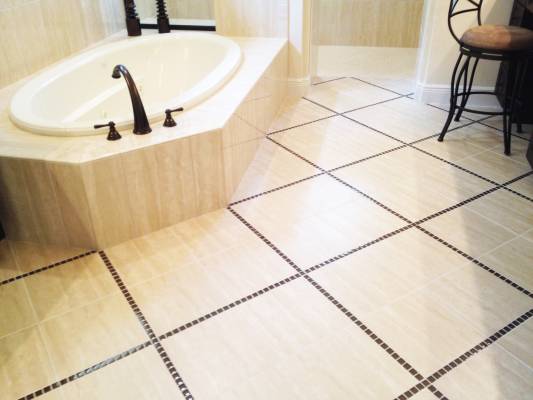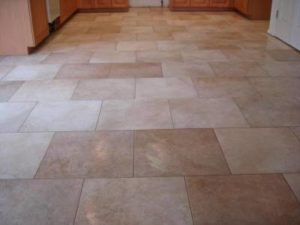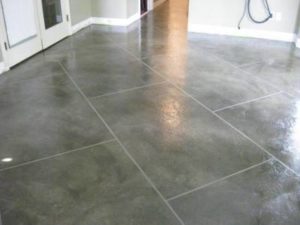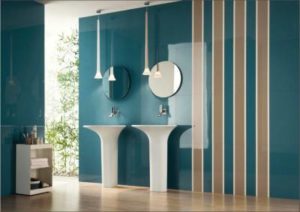As a general rule, the larger the size whether it be a tile, plank or pattern the larger the item the larger it will make the room look. This does not mean that a busy pattern will make a room look larger. Even small rooms like powder rooms appear larger when larger flooring is used. Example: Tiles – choose tiles that are large to make the room appear larger, but not so larger that full tiles are not able to be installed across the room. Installing tile on the diagonal can help a room appear larger.
Myth – light floors will make a room look larger. This is not necessarily true. If the floors are white, but the walls are dark, the room will appear larger. Conversely, the floors can be dark and the walls light and the room may appear larger. Keep in mind too that lighting plays a big part.
Floor tile brings a good looking, easy-to-maintain surface to floors in rooms both large and small. Whether vinyl, ceramic or cut stone, tiles can define the texture of a room, emphasizing the cool crispness or soft warmth of your overall decor. The wide variety of styles and sizes available can make choosing the right tile a concern, especially if your goal is to make your room look larger. Follow professional tips to make a choice you will love.
No longer manufactured strictly in 12-inch or smaller squares, floor tiles can be found in squares and rectangles of 12, 16, 18 and 24 inches. With the possible exception of 24-inch tiles, professionals generally agree that large tiles convey a sense of greater space even in small rooms. Less interruption of the flooring surface with grout lines, they suggest, conveys a sense of larger space. Small tiles and increased grout lines can create a floor that looks busy or fussy. To increase the visual expanse of a floor, designers suggest that you use grout the same or nearly the same color as the tile
While many designers assert that light colors convey a sense of greater space than dark tiles, the impact of floor color will depend on colors used throughout the room. According to the World Floor Covering Association, the light/large equation is purely mythical. Experiment with colors to see what works best in your decorating scheme. Like an accent wall in a vivid color, a strong contrast in color and tone between the floor and the rest of the room can make space seem constricted or cramped. A possible compromise might be to use very small colored accent tiles at the corner junctions of neutral ones. The larger the tile, the longer the distance the eye travels from one accent to the next.
Mixing square and rectangular tiles in the same color and texture provides subtle visual variety without drastically affecting the sense of space. Constructing a seemingly random pattern of various tile sizes takes some skill but will expand visual space more effectively than creating borders or edgings. You may wish to see professional help in mixing sizes, so that all tiles are of the same thickness or caliber.
One of the most effective strategies for using large tiles in small spaces is to lay tile diagonally. A diamond pattern, rather than a checkerboard, prevents the viewer from measuring space in tiles down vs. tiles across. The only limit to diagonal patterns is a room with many alcoves, doorways or other interruptions of wall space. A room with frequently interrupted wall space presents many challenges to laying tile diagonally. It may also impose limitations on using very large tiles. A floor with many partial or cut-down tiles looks constricted rather than spacious.
Call New Floors for all your tile projects!




